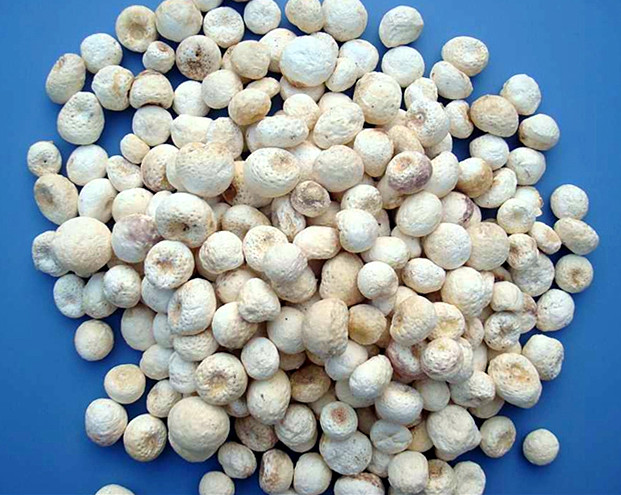It is a perennial herb in Araceae, 15 to 35cm high, with tuber nearly in spherical shape, and 0.5 to 3.0cm in diameter. TCM wise, the medicinal part is the tuber, namely Rhizoma Pinelliae Ternatae (Thunb.) Breit.
The dried pinelliae tuber is spherical, semiorbicular, or oblique, 0.8 to 2cm in diameter. Surface is white or light yellow, with yellow spotted residual cortex. The top is mostly round and flattened, with yellowish brown depressed stem scars in the middle and dense brown pit-shape fibril scars around, and underneath is the blunt sleek end. The quality is solid and compact. The kidney-shaped vertical section is pure white and with fine mealiness, but grayish white or with yellow streaks in older ones or in those unfitting the drying process. Medicinally the preferred one is bigger, clean white, solid and with fine mealiness.
What is it used for?
From the perspective of Traditional Chinese Medicine (TCM), it is acrid, warm, and toxic in nature and covers meridians of lung, spleen, and stomach. Main functions are to dry dampness and transform phlegm, descend reversed Qi and stop vomiting, and relieve oppression and resolve hard mass. Main usage and indications are cough and dyspnea due to excessive phlegm, dizziness and palpitation caused by phlegm and fluid retention, wind-phlegm Vertigo, Headache and coma due to blocking of the respiratory system, nausea and vomiting, distention and fullness in chest, and globus hysteriocus. In addition, externally it is used for swelling and ulcer, pyogenic infections, and venomous snake bite. Usual dosage is 4.5 to 12 grams.


![Diseases, Symptoms, tcm, [tcmwindow.com]](/uploadFile/adImg/2015/11/11/f5cbfcc0-4df5-4646-9b9a-f316651a0199.jpg)





